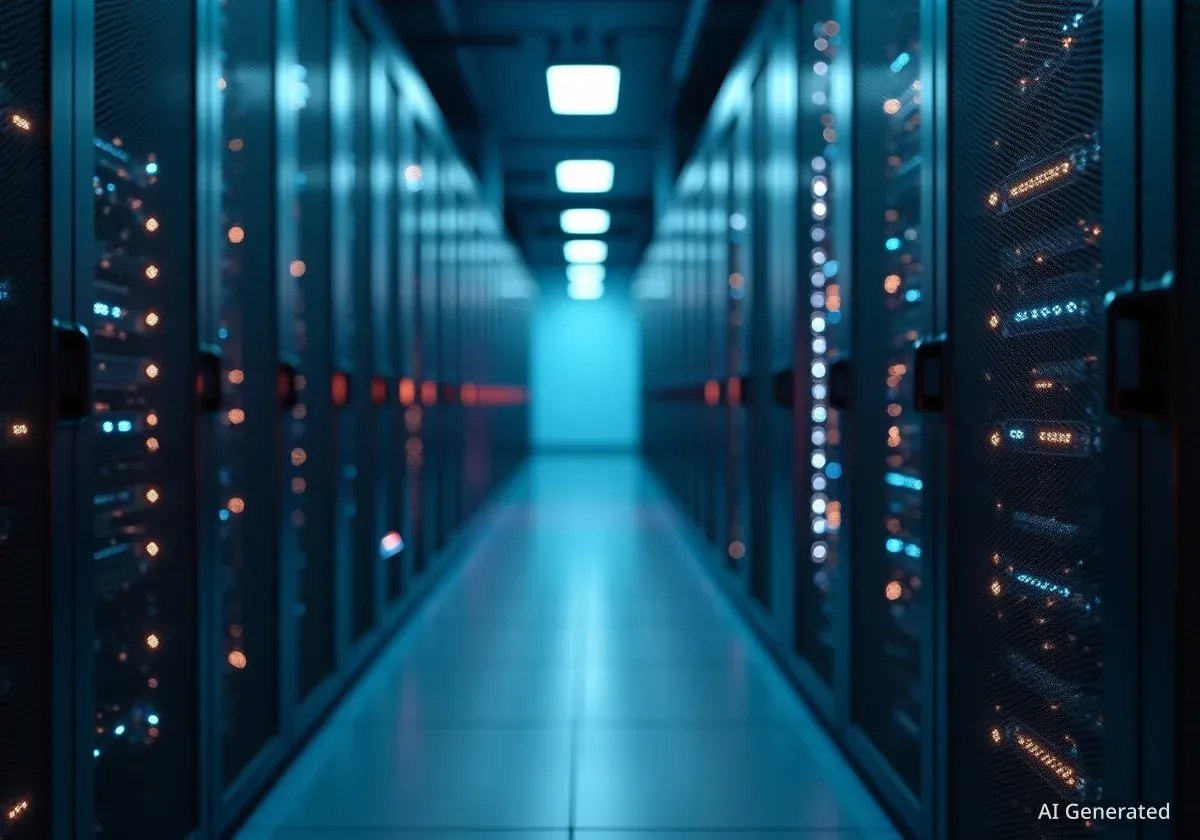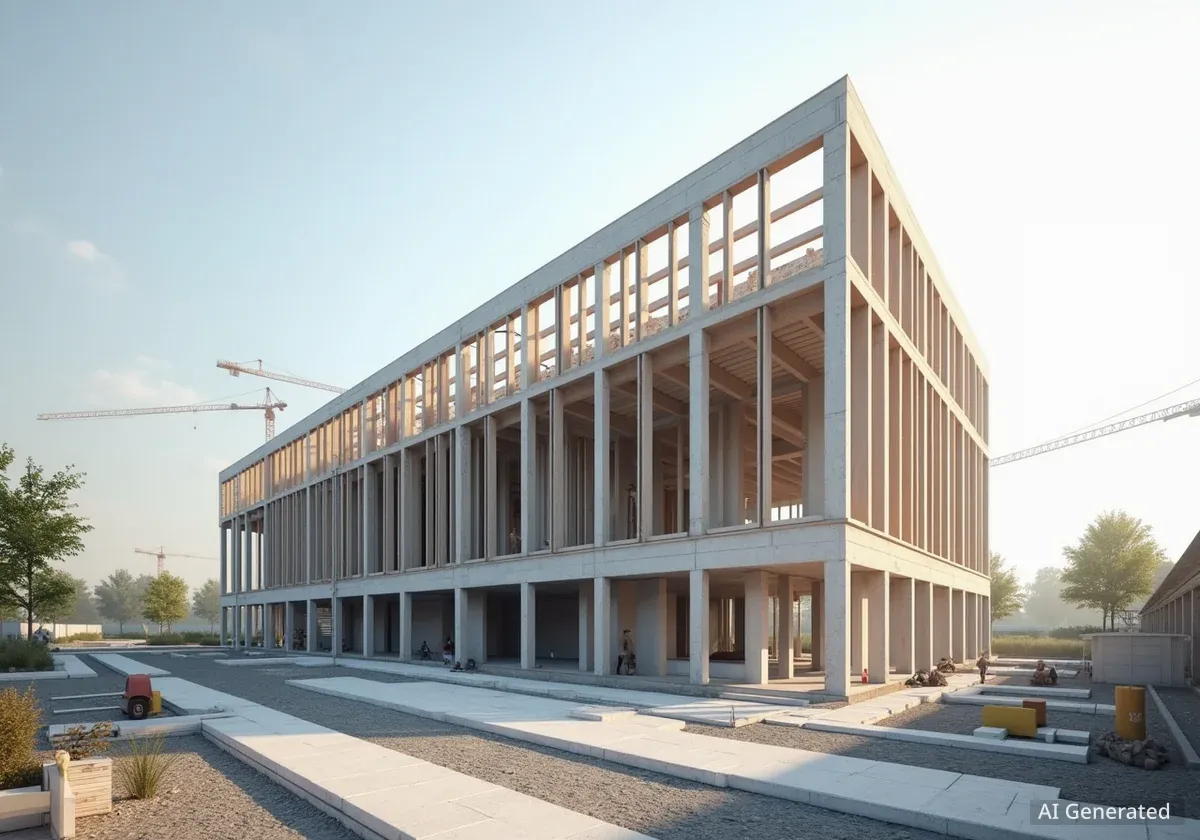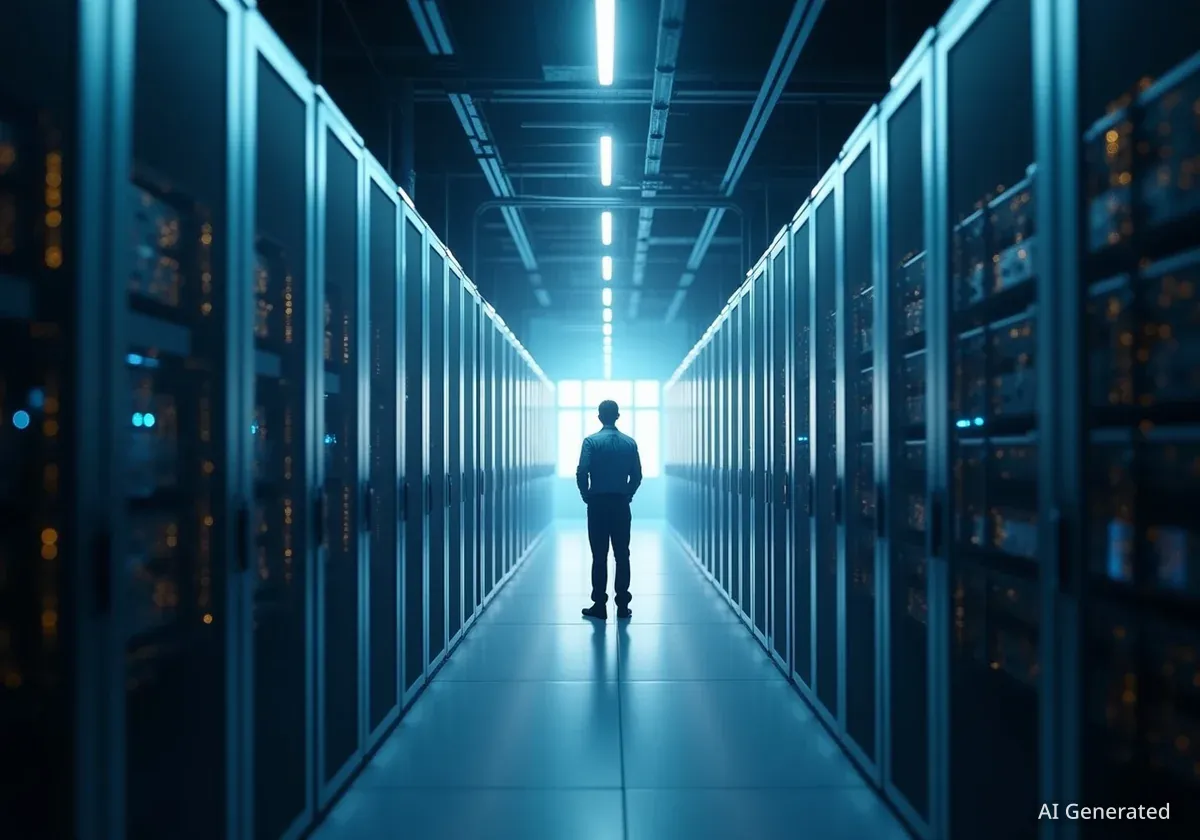A new analysis from Barclays explores potential vulnerabilities in the massive global investment in artificial intelligence infrastructure, examining scenarios that could challenge the current market optimism. While maintaining a positive long-term view on AI, the report considers how factors like power constraints and overbuilding could create significant economic headwinds.
The research draws parallels with the dot-com bubble of the late 1990s, highlighting the rapid increase in capital expenditure by technology giants. However, it also points to key differences in today's financial landscape, even as it acknowledges the substantial risks associated with the unprecedented scale of investment in data centers.
Key Takeaways
- Barclays explores hypothetical risks to the AI investment boom, including power shortages, stalled model progress, and funding gaps.
- Current hyperscaler capital expenditure as a percentage of sales (~25%) is high but remains below the levels seen during the dot-com bubble (>40%).
- A potential 20% reduction in data center capex could lead to a 10-13% de-rating for the S&P 500, according to the analysis.
- The U.S. Department of Energy projects a two- to three-fold increase in electricity demand from data centers by 2028, posing a significant logistical challenge.
- Unlike the dot-com era's fiber optics, modern AI servers have a short useful life, meaning unused capacity could become obsolete quickly.
Examining the AI Investment Boom
Confidence in the technology sector's growth, driven by artificial intelligence, is at a high point. Major financial institutions remain broadly optimistic about AI as a long-term investment theme. However, a recent report from Barclays delves into several 'what-if' scenarios that could lead to a downturn in data center capital expenditure (capex).
The central question is whether the current infrastructure build-out, fueled by aggressive demand projections, could result in a significant supply mismatch. This concern is not without precedent; large tech companies have previously misjudged demand, leading to costly corrections in spending.
Historical Precedent: The Dot-Com Bubble
The dot-com bubble of the late 1990s serves as a cautionary tale. It was characterized by massive upfront investment in infrastructure, such as fiber-optic networks, based on overly optimistic projections of internet demand. When actual demand failed to meet expectations, many companies that financed the build-out collapsed, even though the infrastructure itself eventually became valuable.
Current projections estimate that data center capex will continue to grow at an annual rate of 30 percent well into the next decade. This growth is supported by reports from numerous S&P 1500 companies citing tangible productivity gains from implementing AI technologies.
Is This Time Different? Comparing AI to the Dot-Com Era
Analysts are carefully comparing the current AI investment cycle to the dot-com bubble. While there are similarities, Barclays identifies several key distinctions that suggest a more stable foundation for today's tech giants, known as hyperscalers.
Capital Expenditure and Debt Levels
One major difference lies in financial management. Hyperscaler capex is currently running at about 25% of sales. While aggressive, this is significantly lower than the levels seen during the dot-com peak, when major telecommunications companies saw their capex surge beyond 40% of sales.
Furthermore, today's tech leaders have maintained more conservative financial structures. According to Barclays, debt levels have been kept low, typically within 0.25 times EBITDA. This contrasts sharply with the highly leveraged telecom operators of the dot-com period, whose debt often exceeded multiple turns of EBITDA.
"Hyperscalers, by contrast, benefit from high-margin operations, robust free cash flow generation, and substantial cash reserves — all of which create balance sheet capacity to fund capex," the Barclays report states.
However, this comparison has its critics. The value of dot-com era investments in fiber optics was eventually realized because the technology had a long lifespan. In contrast, the core components of AI data centers—specialized chips—have a much shorter cycle of relevance.
The Risk of Obsolete Infrastructure
According to Nvidia, its chips account for 50% to 65% of the cost of building an AI-enabled data center. With new chip architectures emerging approximately every two years, the useful life of these components is limited. Unlike the "dark fiber" of the 2000s, which could be activated decades later, unused "dark servers" risk becoming obsolete before demand ever materializes.
Potential Triggers for a Downturn
Despite the strong market, several factors could potentially disrupt the current growth trajectory for AI infrastructure spending. These risks range from technological plateaus to fundamental limitations in physical resources.
Resource and Technological Constraints
One of the most pressing concerns is the availability of electricity. The AI industry's demand for power is immense and growing rapidly.
- The U.S. Department of Energy forecasts that electricity demand from data centers could double or even triple by 2028.
- This surge in demand raises questions about whether the existing power grid can support such exponential growth, potentially creating a major bottleneck for new data center construction.
Other potential challenges include a slowdown in the advancement of AI models. If large language models (LLMs) exhaust the available public data for training, or if computational efficiencies for inference improve dramatically, the demand for raw computing power could level off unexpectedly.
The Economic Impact of a Spending Slowdown
Barclays modeled a scenario involving a 20% reduction in data center capex over two years, a plausible figure given that Amazon and Meta implemented similar cuts in 2023 after overestimating demand in other areas.
Market and Earnings Projections
In such a scenario, the direct impact on overall S&P 500 earnings could be relatively modest. The analysis suggests a low single-digit downside risk to consensus earnings estimates for 2026 and 2027, primarily affecting semiconductor, hardware, and networking companies.
The effect on stock valuations, however, could be more significant. A 20% capex cut could trigger a 10-13% de-rating for the S&P 500 as investors reassess the growth prospects of AI-related companies. The infrastructure providers would likely face the most severe multiple compression, potentially in the range of 15-20%.
Broader Macroeconomic Risks
The scale of data center investment means that any significant slowdown would have ripple effects across the entire U.S. economy. Barclays economists estimate that expenditures on computers, software, and data centers contributed approximately one percentage point to quarterly GDP growth in early 2025.
Recession as an Accelerant
The analysis notes that a broader economic recession would significantly worsen the outcome. If a recession materializes for reasons unrelated to AI, the resulting macroeconomic pressure would almost certainly force a reduction in data center capex. This, in turn, would act as an accelerant, deepening the economic downturn due to the sector's growing importance to overall GDP.
While the base case remains positive, analysts see roughly even odds of a U.S. recession within the next two years. The potential for a sharp, macro-driven pullback in AI investment remains a key risk for investors and the economy at large.





